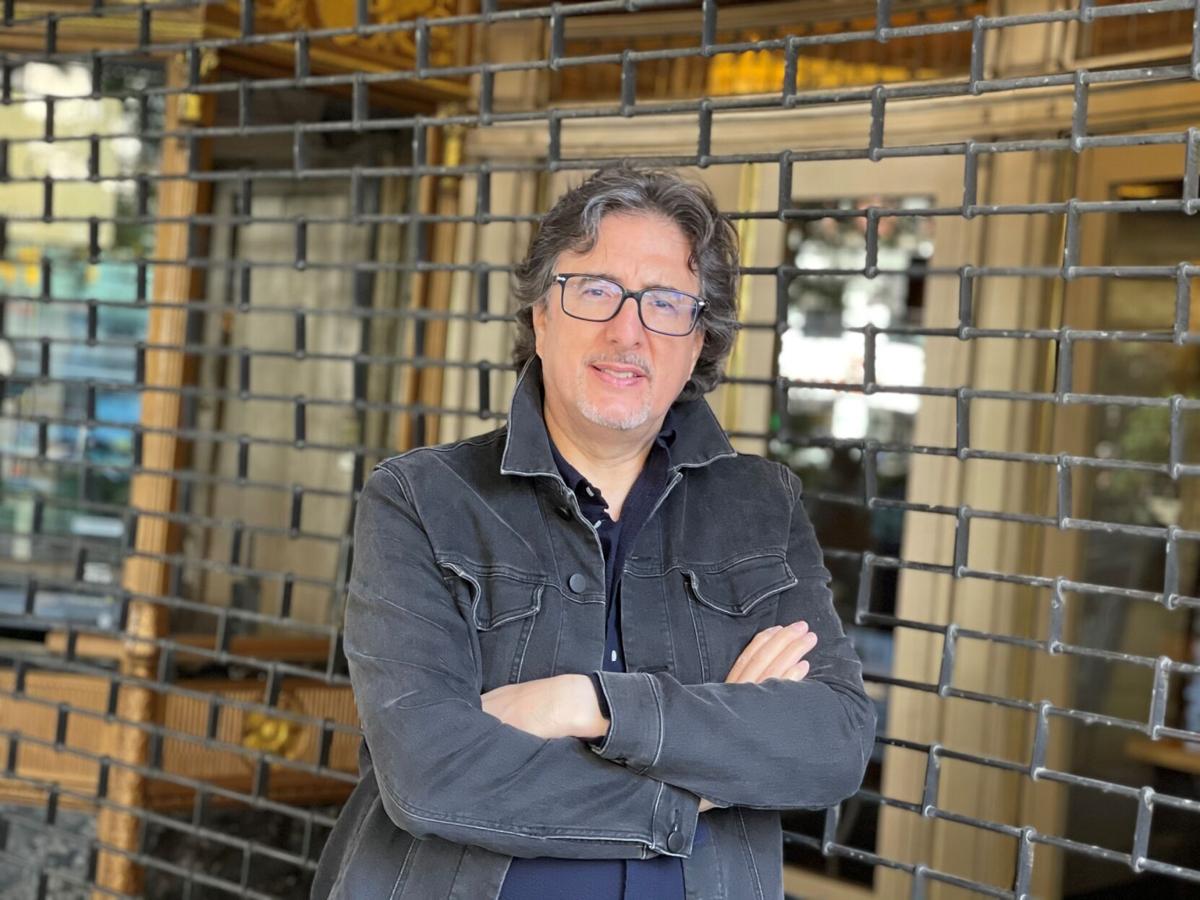Marc Myers remembers walking through his co-ed college dorm in the mid-1970s.
Aerosmith was blasting from one end of the hallway, soothing Joni Mitchell from the other.
Fast forward to 2014, Myers found himself sitting on Joni MitchellŌĆÖs Bel Air patio, chatting about her 1971 song ŌĆ£Carey.ŌĆØ
ŌĆ£To be able to then interview her and spend quality time with her to talk about how that song was written and what went on in Crete, it was just an extraordinary afternoon,ŌĆØ Myers recalled last month in a phone call to talk about his book that he will be discussing at the ├█Ķųų▒▓ź Festival of Books. He is on the ├█Ķųų▒▓ź Stage at 1 p.m. Saturday, March 4.
People are also reading…
The year-old book, a follow up to his 2016 tells the backstories of iconic songs as told by their creators. The books are drawn from his longtime Wall Street Journal column that ran from 2012 to 2022, when he retired it.
ŌĆ£Anatomy of 55 More SongsŌĆØ includes interviews with The Beach Boys, Earth, Wind & Fire, Carly Simon, Keith Richards, Journey and Sheryl Crow to name a few, talking about their iconic songs, from Huey, Lewis and the ├█Ķųų▒▓źŌĆÖs ŌĆ£The Power of LoveŌĆØ from the ŌĆ£Back to the FutureŌĆØ soundtrack to RedboneŌĆÖs ŌĆ£Come and Get Your LoveŌĆØ and Burt Bacharach and Hal DavidŌĆÖs ŌĆ£Walk On By,ŌĆØ recorded by Dionne Warwick.
Myers, who played piano as a kid and was and is a huge jazz fan, interviewed the artists on the phone and, when possible, in person, like the 2014 interview with Mitchell in California.
ŌĆ£I ended up doing Mick Jagger. Mick Jagger is calling me up on the phone for an interview. You pick up the phone: ŌĆśHello, Marc. ItŌĆÖs MickŌĆÖ,ŌĆØ he recalled, affecting a British accent. ŌĆ£Or Keith Richards. It got to the point that I interviewed Keith twice. He loved it so much the first time when we did ŌĆśStreet Fighting ManŌĆÖ that when I wanted to interview him again, which was a couple of years later, he calls up and he says, ŌĆśHello, Marc. ItŌĆÖs Keith.ŌĆÖ ŌĆśHey Keith, how you doing?ŌĆÖ ŌĆśIŌĆÖm fine. Are we doing the anatomy thing today? Get out the scalpels! Get out the surgery. WeŌĆÖre doing the anatomy!ŌĆÖ It was very, very funny.ŌĆØ
The Journal launched the column about a year after Myers joined the staff late in his journalism career. After spending a few years writing for the New York Times right out of college, Myers spent the bulk of his early and mid career in financial journalism before his friend Terry Teachout, a well-respected New York theater and culture critic, suggested he write a blog about jazz.
ŌĆ£He told me, ŌĆśYou know too much. You have to start a blog,ŌĆÖŌĆØMyers recalled.
In 2007, he took TeachoutŌĆÖs advice and launched JazzWax.
In 2010, Teachout, who had been writing about theater for the Journal, invited Myers to lunch with one of his editors, who offered him a job writing about music.
ŌĆ£I always wanted to be doing what IŌĆÖm doing now,ŌĆØ Myers said. ŌĆ£I write on rock. I interview people like Mick Jagger, Keith Richards, Joni Mitchell. IŌĆÖm a late bloomer. I come to this in 2010. I started at the New York Times, and then I weave around in all kinds of areas and then wind up writing about the very thing I wanted to write about, which is movie stars and rock stars.ŌĆØ
ŌĆ£Anatomy of a SongŌĆØ started with a suggestion from an editor. The first subject was Smokey Robinson. He interviewed Robinson, then wrote the column as a write-through, where he would control the narrative and add quotes from Robinson.
He wrote the first few columns this way before deciding that something was lacking.
ŌĆ£It just didnŌĆÖt feel organic to me,ŌĆØ he said. ŌĆ£There was a lack of proximity. ... I wanted (the reader) to feel SmokeyŌĆÖs breath. I wanted them to see him and to feel as though he was talking to them.ŌĆØ
He proposed changing the column to an oral history format, where the narrative comes from the artist. Myers wrote an intro that gave the historical context and the interviews were edited down for clarity and focus. But the columns were in the artistsŌĆÖ voice, recalling what they were feeling, experiencing and thinking when they created a song that became part of the pop culture fabric.
Reader response to the oral history format was impressive, he said. And the artists were thrilled, as well. Here was a journalist calling them not about their latest personal tragedy, drug rehab or broken relationship. Myers wanted to know about their art.
Myers recalled his first interview with the Rolling Stones frontman Jagger.
What were they talking about, Jagger asked him. Your art; how you created ŌĆ£Moonlight Mile,ŌĆØ Myers responded.
ŌĆ£Once he realized very quickly that I was there to talk about the art ... what was going on emotionally with him, what was he feeling, what was he thinking. Why was that song being written at that particular time? Why couldnŌĆÖt he sleep on the train that night? Once he realized that it was going to be an art interview, he became very introspective, melancholy and very, very open,ŌĆØ Myers said.
ŌĆ£I remember getting a letter from somebody who had written a book on the Stones,ŌĆØ he added. ŌĆ£And the writer said, ŌĆśHow the hell in 25 minutes did you get that from Mick Jagger? I spent eight years on my book and you got closer to that guy, emotionally, than I ever could.ŌĆÖŌĆØ
Legendary singer-songwriter Joni Mitchell has been awarded an honorary doctorate from Berklee College of Music.

















